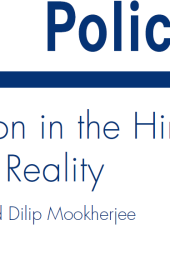Deforestation in the Himalayas: Myths and Reality
Summary
This policy brief on the Myths and Reality of Deforestation in the Himalayas gives an overview of deforestation in the himalayas and aims to dispel common myths surrounding deforestation in the region and provide a more nuanced understanding of the issue. Public discussions on deforestation often revolve around beliefs that it is extensive and increasing, negatively impacting local livelihoods. Commonly held views suggest that economic growth, local poverty, and inequality contribute to the acceleration of deforestation. A frequently proposed remedy involves granting property rights over forests to local communities, allowing them ownership and management autonomy to curb deforestation.
These propositions align with economic theory and empirical observations. Human populations utilize forests for various purposes such as household energy, livestock fodder, and timber for wood products. Forest areas are frequently cleared for agricultural expansion, mining, residential construction, and urban development. Economic growth, which increases demand for food, energy, minerals, furniture, and housing, can naturally drive deforestation. Among those residing near forests, the poorest households often rely the most on forests for essentials like firewood, fodder, and other produce.
Categories:
Article
Publisher:
Sandee Econimics and Environment
Published Year:
2014
